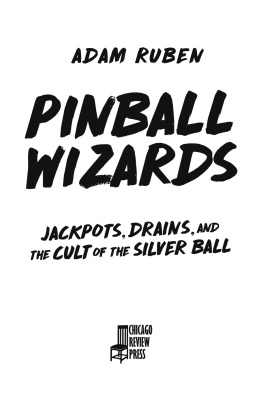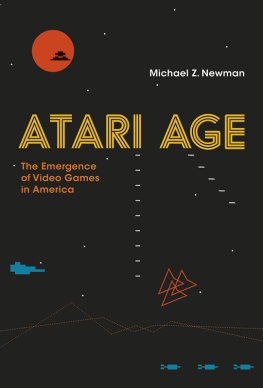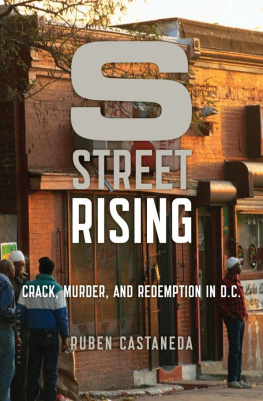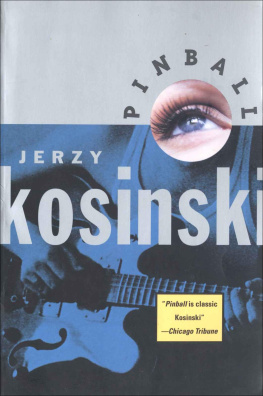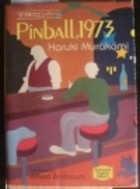Introduction
Ever Since I Was a Young Boy,
I Played the Silver Ball
I LOVE PINBALL.
It is a bizarre, intricate game that has no valid reason to exist. Just think of the absurdity of someone inventing this thing from scratch, designing the 3,500 individual pieces that compose todays games, meticulously assembling and decorating every square inch, programming a complicated set of rules, then putting it in a bar for strangers to slap. Pinball machines almost look like attempts at whats kindly called outsider art, the sort youd find at a specialized museum next to a placard reading: This machine, and the adjacent toothpick model of the Burj Khalifa, were built by hand over a span of twenty years by a high-functioning chimpanzee trapped in a municipal steam turbine.
Once, in graduate school, I mentioned the word pinball to a classmate, and she asked, Pinball? Is that, like, the game with the Ping-Pong ball and paddles? I explained that, no, the game with the Ping-Pong ball and paddles was called Ping-Pong. I then described pinball in excruciating detail, until I realized that she had stopped listening because she thought I was describing a video game.
In actual pinball, the ball is about the size of an egg yolk but with a nice weight to itlike if you held it in your hand, youd think momentarily about lobbing it through a windowpane just to hear that satisfying crash. Only you cant hold it in your hand, because its trapped inside a machine called a cabinet, which looks like a coffin on legs.
With your right hand, you pull back a rod on a spring (the plunger), then release it to smack the little silver sphere onto the playfield, a mostly flat, lacquered expanse as jam-packed with flashing gadgets as sanity and cost constraints will allow.
The object of the game is to keep the ball on the playfield, where it can boing around scoring pointsregistered on a display board called the backglass in the upright backboxas long as possible. The playfield, however, is tilted ever so slightly downward, toward you, so that the ball inevitably succumbs to gravity, rolling down the polished wood surface and into the drain.
Yes, the hole right in front of youthe hole you struggle to keep the ball the hell away fromis called the drain. When the ball drops in there, its gone, and some frustrated cursing and machine shoving may occur.
If that was the whole game, Id never play it. What Ive just described is like those little plastic toys with the tiny ball bearings, where you shoot the balls and try to catch them in U-shaped cups with point values attached, the kind that provides literally minutes of entertainment when a child selects one from the treasure chest in the dentists office. And for years, pinball was just that: plunge and pray. Score points on your balls brief trip from plunger to drain, then exclaim something 1930s-ish, like Humdinger!, and head to the Odeon to pay a dime for the double-feature newsreel.
Then, in 1947, a game called Humpty Dumpty introduced a bold new concept: button-operated flippers. (The ads for Humpty Dumpty, with its New Type Skill Flippers, boasted that The Player will Laugh! The Spectator will Roar! The Operator will be Thrilled!)
Flippers. Two flat, rubber-lined paddles like pinky fingers, just above the drain, and if you press buttons on the side of the cabinet, the flippers flick upward, knocking your ball away from the drain and back toward the enchanting gadgets, where it can continue to accumulate points. With the flippers, you can actually aim the ball, trying to hit a particular target, or send the ball zipping up a plastic ramp. You can call your shot and feel like a little Babe Ruth.
But the gadgets. Oh, the gadgets.
Big, swirly ramps that swoosh the ball satisfyingly around the playfield. Squat, round pop bumpers that ping the ball away quickly and unpredictably. Drop targets, which are exactly what they sound like (targets that drop when hit with the ball). VUKs, or vertical up-kickersshoot the ball in a shallow hole, and the VUK will K the ball V-ly U into another gadget. Rollovers, buttons that activate when rolled over. Even extra flippers, positioned high up the playfield for hitting distant targets or side ramps. Holes that swallow the ball and suddenly send it out elsewhere, like when Pac-Man munches off the left side of the screen and magically appears at the rightonly this, and all of this, is happening with an actual, physical ball. And not only do you get to watch it all happen, you get to control it, to conduct the mechanical symphony of this idealized world, to direct a hundred tiny mechanisms to function in harmony. Its like a Rube Goldberg machine in real time, a universe of physics and fast choices and skill and luck and angles and sounds and flashing lights and steel and plastic and varnished wood and complicated rules and rewards and consequences and heartbreaking drains and magnificent saves and brilliance and glory.
I love pinball.
My first exposure to pinball came during childhood, when it was just one component of the greatest time and place the universe had to offer: summer nights at Funland amusement park in Rehoboth Beach, Delaware.
Like many visitors down shore, my family spent fifty-one weeks a year in northern Delaware and one glorious week in southern Delaware, at the beach. Delaware boasts a handful of beach towns, of which Rehoboth is the largest. My family would rent a little house in one of the smaller townsLewes or Bethanyand spend a week in a kids paradise.
During the day, wed play in the ocean or on the sand, eating a lunch of local sweet corn and canned tuna on the porch. At night, wed drive to Rehoboth, where we could hear the screams from the Ferris wheel and paraglider the moment we opened our car doors. My dad would feed the parking meter quarters wed brought in black plastic film canisters, grumbling about how a quarter used to buy you half an hour, and now it was twenty minutes.
This gives us until 9:40, hed say, and my sister Rachel and I would beg for just one more quarter, a little more bought time, twenty more of the most treasured minutes we knew.
Funland wasand still is, Im happy to reporta wonderful little family-owned amusement park on the Rehoboth boardwalk. There were rides. There were win-a-stuffed-animal games, but not the impossible kind (Throw a basketball through a hoop slightly smaller than a basketball!). And alwayssitting in the same spot between the shooting gallery and the carousel, just beside the toddler boats and with a clear view of Super Goblet Tossthere was pinball.

